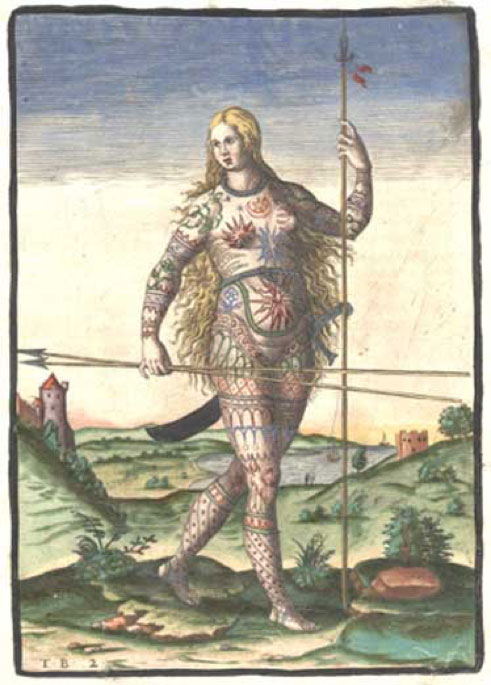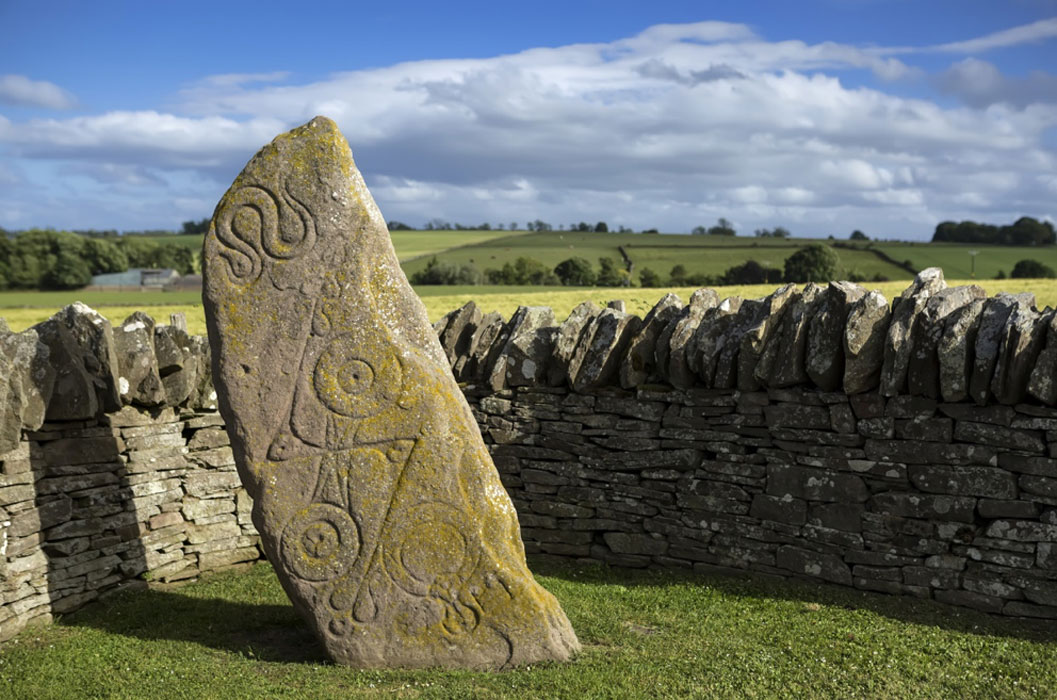Signed, Sealed and Delivered: ‘Savage’ Pictish Warriors of Scottish Highlands Had Written Language
The Picts were an ancient race of people that inhabited the northern territories of what is known today as Scotland. Recorded as uncultured savages in defamatory Roman accounts, new findings suggest the Picts had developed written language as far back as 1,700 years ago.
The Painted Ones
When the Romans invaded Britain in the third century, the indigenous inhabitants of Scotland had formed a formidable force of tattooed, polyamorous warriors that the Romans called the Picts, meaning the painted ones. Having resisted the northward advances of the Roman Empire using guerrilla warfare tactics, the Picts are credited for being one of the primary reasons the Romans didn’t conquer all of Scotland. Having converted to Christianity in the 6th century, the Picts endured two centuries of Scandinavian Viking invasions until about 850 AD when they were incorporated into the Scots Kingdom of Alba under King Kenneth MacAlpin,” at which time the Pict’s indigenous identity was lost.

Hand-colored version of Theodor de Bry’s engraving of a Pict woman (a member of an ancient Celtic people from Scotland). De Bry’s engraving, “The True Picture of a Women Picte,” 1588 (Public Domain)
Symbols on Stones found to be Formal Written Language
The new research published yesterday (Oct. 26) in the journal Antiquity, suggests the Picts might have used a formalized written language with some of the researchers maintaining “It might have been created during the Middle Ages in the aftermath of the Romans leaving Britain.” Gordon Noble, head of archaeology at the University of Aberdeen in the United Kingdom and the senior author of the Antiquity paper, told reporters at Live Science “The language is based on a series of symbols the Picts carved on stone, bone, metalwork and other artifacts.” Noble added, “In the last few decades, there has been a growing consensus that the symbols on these stones are an early form of language.”
Pictish symbol stones are generally found in the north-east of Scotland into the Highlands and traditionally, the symbols were believed to represent clan or family motifs. Where several symbols are found on a standing stone they were thought to indicate territorial boundary markers. But Pictish symbols are also found on jewelry, small stone discs and bones and on the walls of coastal caves, for example, at East Wemyss in Fife and at Covesea in Moray, suggesting the Picts probably applied their symbols to items which have since rotten away such as sail cloths, clothing, flags and in tattoos.
- Scottish Fisherman Discovers a “Stunning” Pictish Symbol Stone on Riverbank
- Picts, Gaels, and Scots: Exploring their Mysterious (and Sometimes Mythical) Origins
- Picking Apart the Picts: The Value of Aberdeen's Newest Discovery

Carvings on an ancient Pictish stone, which researchers now believe is a formal written language (sbuwert / Fotolia)
Pictish Language
The language of Pictish symbols is composed of geometric symbols which experts have given wildly descriptive terms such as: "V-rod", “double disc and Z-rod”, “notched rectangle and Z-rod”, “crescent and Z-rod”, "mirror and comb" and "triple disc". Representations of animals are also found including; wolves, stags, adders, eagles and salmon, as well as the mythical Pictish ‘beast’.
To ascertain if Pictish symbols belonged to a structured language the University of Aberdeen scientists teamed up with members of the Northern Picts Project and excavated at sites where Pictish symbol stones had previously been discovered. The research paper details excavations at “Dunnicaer fort rampart” that was in use between the second and fourth centuries AD, and at a “wooden enclosure at the Rhynie pictish site.”

Historic Pictish sculptured standing stones, Aberlemno (Stuart / Fotolia)
An article in The Independent discussing the scientists attempts to “Measure the amount of randomness in an un-deciphered script” explains how difficult this process was due to the “limited number of examples” which forced researchers “to work with small datasets, making this analysis tricky.” The team of researchers determined traces of “predictability in the Pictish symbols” that would expect to be found in “written script.” In the research paper, which was published recently in the journal Proceedings of the Royal Society, the researchers said “It is extremely unlikely that the observed values for the Pictish stones would occur by chance.”
The paper concludes that the “Pictish language was likely developed in the third or fourth century AD and it may have been inspired, to a degree, by the Romans, who also used a writing system at the time.” But rather than basing their language on Latin (that the Romans used), the Picts’ writing style that was quite different from that language, the scientists noted in their study. And while the Picts were developing their language, a Runic writing system was being developed in Scandinavia and an early Ogham style was emerging in Ireland.
The researchers wrote "As with Runes and Ogham, the Pictish symbols were also probably created beyond the frontier in response to Roman literacy.” The next step for the researchers is to expand their dataset to include “every” Pictish symbol ever recorded, which will enable them to “hone in on the language and, hopefully, decipher it.” Scientists do not think that the Pictish language will be deciphered any time soon, unless of course a text is discovered written in both Pictish and a known language, Noble told Live Science. Essentially, without finding the equivalent of a Rosetta Stone in a Scottish field we will probably always gaze upon the Pictish symbol stones in wonder.
Top image: Aberlemno Pictish Stone, Scotland (Fulcanelli / Fotolia)
By Ashley Cowie

















